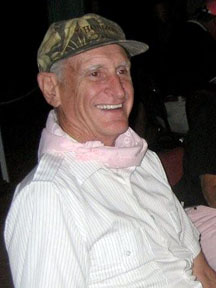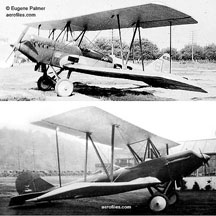Another Excellent Addition/Correction from
Ted Wilkinson
There was a 4th A-bomb
In the article (Trinity)
the statement is made that "The allies had only three, two left after
the test."
Actually the allies didn't have any. The United States had
two left after Trinity
which they used at Hiroshima and Nagasaki, but they also had another plutonium
bomb which became ready for use at about the time the Nagasaki bomb was
dropped.
This bomb was still in the U.S. and following Nagasaki,
Tibbets was directed to get that bomb to Tinian immediately. The Japanese
didn't capitulate immediately following the Nagasaki bombing, but President
Truman ordered that the third bomb not be used, and before that order
was amended, the Emperor ordered the cease fire and the end of the Japanese
resistance. (Basically the surrender of Japan) The third bomb was disarmed
and subsequently transferred to the Smithsonian Museum and was stored
at the Paul Garber facility located at Silver Hill, Maryland (where it
may still reside.)
The distinction about the allies no having any bombs was an "all
U.S. effort" in the use of both bombs is significant in that the
British formally requested to put a crew member aboard the Enola Gay,
and on orders of President Truman they were firmly rebuffed. The President
made it abundantly clear that this was to be exclusively an American effort.
The exclusion of the British from the Hiroshima mission, was mentioned
in the book, "Enola Gay" by Gordon Thomas and Max Morgan Witts
(Pocket edition, 1978 printing) on page 234 states that, "The war
cabinet had insisted that Britain be represented when the bomb was dropped.
President Truman had agreed 'in principle' to this at Potsdam."
Then on page 268 of the same volume they state that at the preflight briefing,
"At 2:45 the British contingent arrived. Both Cheshire and Penny
were grim-faced, having just been told by LeMay that they were to be excluded
from flying on the first atomic mission. Hoping for a last minute reversal
of the order, they seated themselves behind the scientists."
If indeed Truman had at least tacitly agreed to British participation
in the first atomic mission, it is unlikely in the extreme that anyone
had overruled the President. Or to state it more succinctly, the President
had put them off the flight. The Enola Gay was of course joined by two
other B-29s at Iwo Jima, and one of those had a Britisher onboard.
As to the existence of the third bomb, as I mentioned it was still being
assembled at the time the Nagasaki bomb was used. Right after the Nagasaki
bomb, the President ordered a halt to the use of nuclear weapons. I don't
recall ever reading whether the third bomb ever left the U.S. of A. I've
been told that this bomb was completely disarmed (both the plutonium pit
and the high explosive detonator) and it now resides in the Smithsonian
Museum, Paul Garber Restoration Facility located at Silver Hill, MD. It
is/was identical to the Fat Man bomb.
 Ted Wilkinson |
Editor's note: About Ted Wilkinson Ted Wilkinson has provided several worthwhile additions to Kilroy Was Here. He is a retired professional pilot and an amateur historian. He was born in 1935 and so was 10 when WWII ended. After getting his BS in Metallurgical Engineering at Le Tourneau College, now LeToutneau University he worked in the field for six and one half years then flew as an airline pilot for 35 years. |
| His father owned the first private
A/C (an Alexander Eaglerock) in Floyd County, TX. He grew up around
airplanes, achieved Private, Commercial, Instrument licences. He holds
ATP ratings in Learjet, B-727, B-757, B-767, FAA licensed Mechanic,
Flight Engineer (Reciprocating, Turbine.) He resided in Washington, D.C. area for several years and volunteered as a restoration technician at the Garber facility where the forth bomb was stored but says he never actually saw it. Even the shape of the bombs into the late 1950s was classified so was never seen without clearance and "need to know." He helped restore the Curtis F9-C 'Sparrowhawk'. |
 Alexander Eaglerock Click image for a larger view Image courtesy http://www.aerofiles.com |
|
He also worked at what was formerly the "Electromagnetic separation plant" in Oak Ridge, Tennessee. The U-235 for the "Little Boy" bomb was produced by the "Electromagnetic separation" process. Ted says "When they finally got it going, it became apparent that the "Gaseous diffusion" process was substantially more efficient, and that's the process that was finally settled on, but initially the Electromagnetic process got going sooner and actually produced the first product. " |
Send Corrections, additions, and input to:
|
Visitors since
June 6, 2000 |
